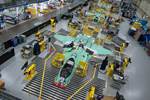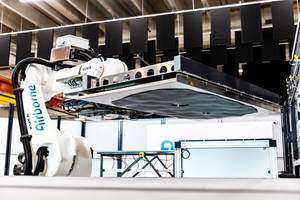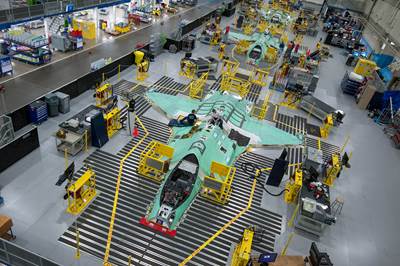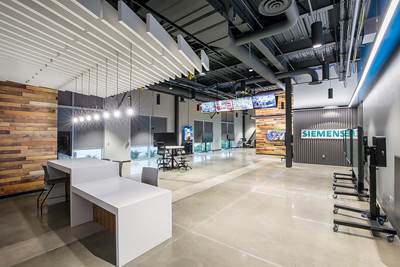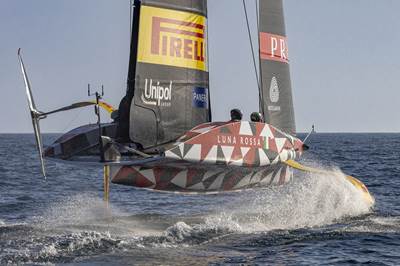Siemens software chosen for JetZero BWB aircraft concept, launches Xcelerator updates
Aviation startup will use the Xcelerator platform to achieve its aircraft vision. Other Siemens collaborations deliver software additions to deliver, democratize industrial AI for small companies, startups.
Share
Read Next
Aviation startup JetZero has chosen Siemens Digital Industries Software’s (Plano, Texas, U.S.) Xcelerator open business platform for the development, production and operation of its blended wing aircraft — a design that aims for 50% fuel efficiency improvement, noise reduction and zero carbon emissions by 2035. CW has recently written about other blended wing body (BWB) aircraft concepts such as Natilus’ Kona and Horizon craft, where composites will become key.
Siemens brings industrial AI to the edge of the factory floor for secure access to large language models. For example, Siemens has launched its Industrial Copilot for Operations, enabling AI tasks to run as close as possible to machines. This facilitates rapid, real-time decision making for shopfloor operators and maintenance engineers, boosting productivity, operational efficiency and minimizing downtime. According to the company, this suite of copilots can enhance human-machine collaboration across all experience levels, helping to accelerate development times and innovation cycles. The Siemens Industrial Copilot will be integrated with the Industrial Edge ecosystem, which has been enhanced with AI for deploying, operating and managing AI models within the production environment.
JetZero is planning to build a “Factory of the Future,” a greenfield factory in the U.S. where the startup intends to tightly integrate Siemens’ automation hardware, software and services to help it achieve its vision encompassing aircraft electrification, automation and digitalization. The JetZero aircraft and its associated manufacturing operations will be simulated virtually using comprehensive digital twins, enabling the company to de-risk the manufacturing process, validate the approach and scale processes long before any ground is broken or jets take to the skies.
“Siemens is giving us the confidence to take a leap, not just a step, in revolutionizing air travel,” says JetZero CEO Tom O’Leary. “Their digital twin and industrial metaverse technologies will be instrumental in helping us design, build and operate the world’s first fully digital aircraft.”
Siemens’ software products have already been proven in other composites aerospace and mobility applications with other customers:
- Airbus Group Innovations, for example, used Simcenter Samcef software from the Simcenter portfolio for virtual composite component testing, supporting the group’s objective of developing technological excellence and breakthroughs to support industrial innovations within its divisions (read use case here).
- The Composites Innovation Centre Manitoba Inc. (CIC) used NX and Simcenter when preparing and analyzing composite structures for a fiber-reinforced polymer passenger car. The software rapidly evaluates design alternatives in half the time of CIC’s previous software (read use case here).
- Howaldtswerke-Deutsche Werft GmbH (HDW) purchased the Fibersim portfolio to design and manufacture glass and carbon fiber outfitting parts for class 212A and class 214 submarines. The software reduced development time, increased part quality and cut manufacturing labor time by 20-20%. Since purchasing Fibersim software in 2008, HDW has also used it to increase the amount of composites on its new submarines by 10%/year (read use case here).
Siemens is showcasing its vision for the future at CES. Source | Siemens Digital Industries Software
During CES, Siemens also highlighted its commitment to enabling startups and companies of all sizes to use its industrial metaverse technologies. Through the new Siemens for Startups program, innovators of any size are said to have access to the intelligence, ecosystems and technologies they need to turn their big ideas into world-changing innovations. Siemens is providing access to venture partnering and clienting services along with reduced-cost access to software and hardware from the Siemens Xcelerator platform. In addition, Siemens is collaborating with Amazon Web Services to offer AWS credits, business development resources and access to the AWS Activate program for technical and go-to-market support.
Peter Koerte, member of the managing board, CTO and chief strategy officer, Siemens AG, notes that the company is adding new industrial AI capabilities across the Siemens Xcelerator portfolio. For instance, a recent collaboration with Nvidia Corp. (Santa Clara, Calif., U.S.) is bringing the Teamcenter Digital Reality Viewer powered by Nvidia Omniverse, which provides large-scale, physically based visualization directly into the product lifecycle management (PLM) system. This capability also enables teams to collaborate in a secure, digital twin environment using their live 3D data, reducing errors and data discrepancies while streamlining workflows and decision-making.
Also, in collaboration with the Sony Corp. (Tokyo, Japan), Siemens is delivering a novel solution for immersive engineering that brings together Siemens NX software for product engineering with a head-mounted display from Sony to enable content creation for the industrial metaverse. Now available for pre-order and shipping beginning in February 2025, Siemens’ Immersive Engineering toolset brings the power of mixed reality to the product engineering and manufacturing community, enabling high-fidelity, mixed-reality and 3D-focused collaboration.
Siemens has also unveiled the Designcenter software suite, which brings together its portfolio of design and engineering software including Solid Edge and NX software in one unified offering so that companies of any size can design and collaborate using the Parasolid modeling kernel. “[Using Designcenter], companies of every size can scale with the same solution set, their data in the same format — without interruption,” says Tony Hemmelgarn, president and CEO.
Related Content
ST Engineering MRAS presents initiatives to drive autoclave efficiency, automation
During a JEC World 2024 panel discussion, the company revealed ways in which it is maximizing throughput and efficiency of its autoclaves and enhancing composites production processes.
Read MoreIMDEA introduces digital twin for real-time analysis of composite materials production
Newly designed digital twin by IMDEA and Technical University of Madrid researchers enables manufacturers to see inside composite materials as they are being produced, facilitating early detection of faults.
Read MoreHow AI is improving composites operations and factory sustainability
Workforce pain points and various logistical challenges are putting operations resilience and flexibility to the test, but Industry 4.0 advancements could be the key to composites manufacturers’ transformation.
Read MoreModular, robotic cells enable high-rate RTM using any material format
Airborne’s automated ply placement systems at Airbus, GKN Aerospace and Teijin Automotive Technologies aim to maximize flexibility and intelligent automation.
Read MoreRead Next
Lockheed Martin Aeronautics adopts Siemens’ Xcelerator portfolio
Software and services to support the digital engineering transformation of the F-35, including the program’s use of composite materials and processes.
Read MoreSiemens, Deloitte demonstrate Industry 4.0 innovation at The Smart Factory @ Wichita
New dedicated space enables companies to experience the future of smart manufacturing and the power of digitalization using the Siemens Xcelerator portfolio.
Read MoreLuna Rossa Prada Pirelli adopts Siemens Xcelerator portfolio for America’s Cup composite yacht
Critical digital tools and services increase design complexity, improve manufacturing repeatability and accelerate development for composite racing yacht construction, in and out of season.
Read More

